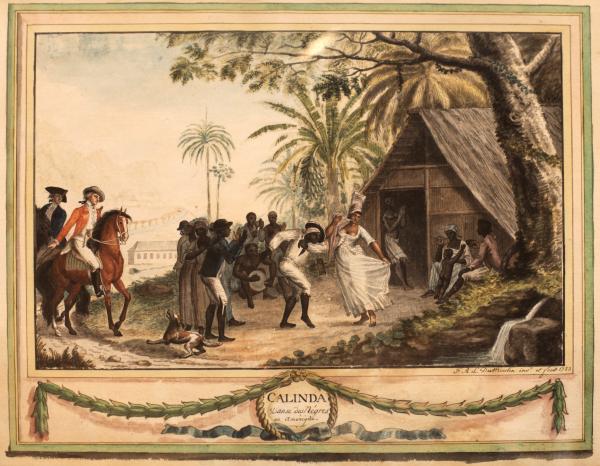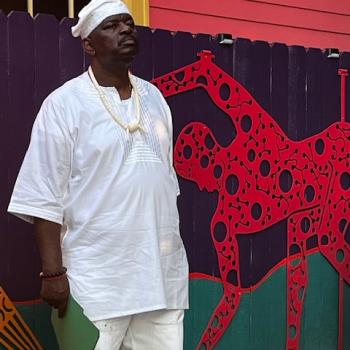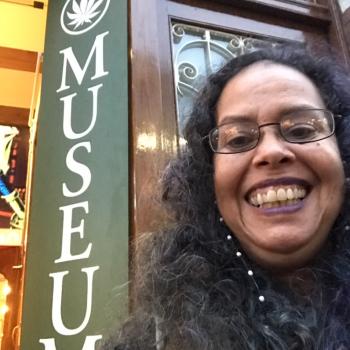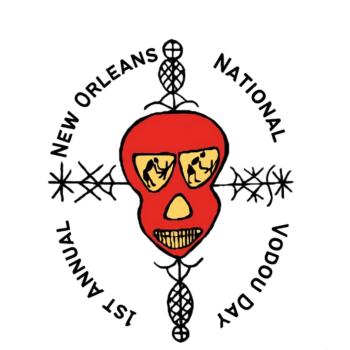One of the most sublime ways that the religions of New Orleans Voodoo and Haitian Vodou are expressed is through the power of the dance. Dance allows practitioners to access the sacred realms of the living and the dead. This is done through repetition, precision, and grace. There are many different dances for the Lwa, but two of the most widespread are the Yanvalou and the Calinda.
Yanvalou
In my opinion the Yanvalou is a dance of resistance and revolution. Its moves mimic the movements of the snake. Many see it as a Voodoo dance for Damballa, the serpent Lwa of creation. Here in the U.S. this dance was popularized by legend Katherine Dunham. Her 1994 interview with Dance Magazine explains :
One of the movements that Dunham says she uses is the yanvalou, the dance “sacrifice” performed to invoke the spirits. “It involves all of the body, and it produces a state of ecstasy in a ceremony…
The first time I saw this step was at a twenty-four-hour ceremony of the Three Kings, held annually in January. I entered a large, open, concrete structure in the slums of Port-au-Prince, crowded with initiates, drummers, and a congregation of some fifty people. The initiates–dressed in white, heads wrapped in white kerchiefs–were moving like white waves: Their knees were bent, their hands on their knees, their backs constantly undulating, and their shoulders rhythmically rising and rolling away from their bodies. They moved to the beat of the drums, which started slowly and burst into a feverish pitch.”
This video shows Djenane St. Juste performing the traditional movements.
Calinda

The Calinda, like the Yanvalou, is also a Voodoo dance of protest. The website streetswing.com explains “The Calinda was a dance of multitude, a sort of vehement cotillion. Men and women would dance with “Lascivious Gestures,” the thighs together, striking them together in a rhythm patting, and would feature pelvic thrust’s and hip gyrations. They then would separate with a pirouette, only to begin advancing towards each other all over again, doing the same movements with lascivious gestures. These dancers would sometimes last for hours and upon tiring, another would take their place. Throughout the dance the dancers would lock arms and make several revolutions, slapping their thighs and “kissing each other.” The Calenda had numerous attempts of mock and ridicule and had actual attempts at banning the dance from society, and finally un-successfully banning the dance in 1843, however the Calenda lasted well into the late 19th century, despite the protests.”
In New Orleans Voodoo it is widely held that the Calinda was a Voodoo dance associated with St. John’s Eve. This is one of the most popular holidays in the religion. It was a particular favorite of Voodoo Queen Marie Laveau. In my post St. John’s Eve The Darker Side of Solstice it says Most agree St. John’s eve was made the amazing New Orleans celebration that it is today by Voodoo Priestess Marie Laveau. This grand queen performed headwashing ceremonies on this day, either on the Bayou St. John, or Lake Ponchartrain (also called St. John’s lake.) Marie Laveau was widely known for her charity work, so this year consider honoring the fire in your heart and in your soul by donating or giving to those less fortunate.
Dance Dance Revolution
There is no question that both the Calinda and the Yanvalou are sacred Voodoo dance performed to resist and transform both the dancers and the wider world around them . I am a big fan of Cumbe Dance center here in NYC. Here is Julio Jean along with dancers performing Dessalines. Lucky for us he will be offering this year’s Gede celebration again described as a ” special 2-hour celebration, you’ll learn the traditional dances of Banda and Maskawon, mostly known as Yanvalou Gede. To enhance the experience, you can wear black, white, purple, or silver outfits and bring props like a cane, dark glasses, and tall black top hat. Kwa Simibo!”

















